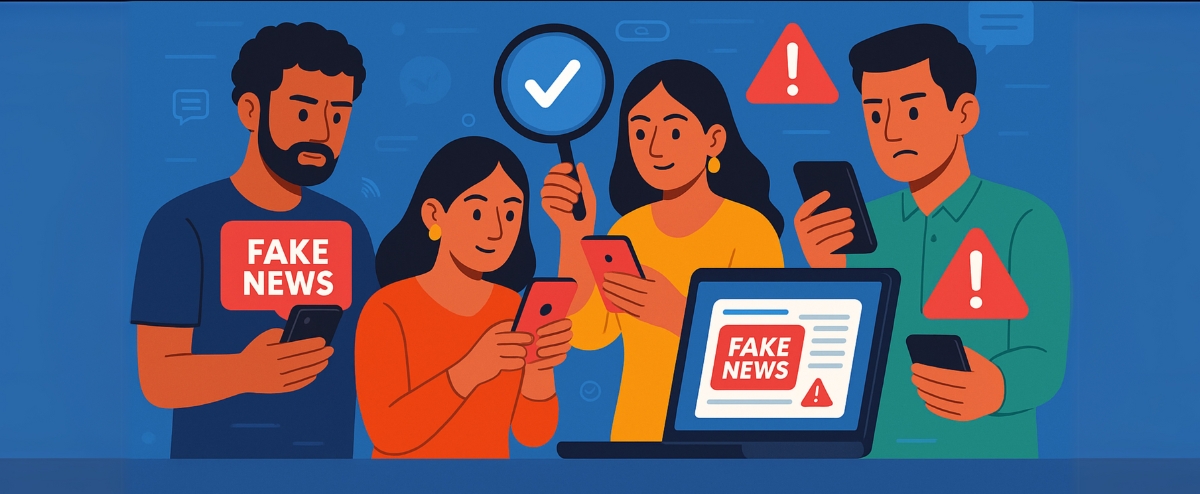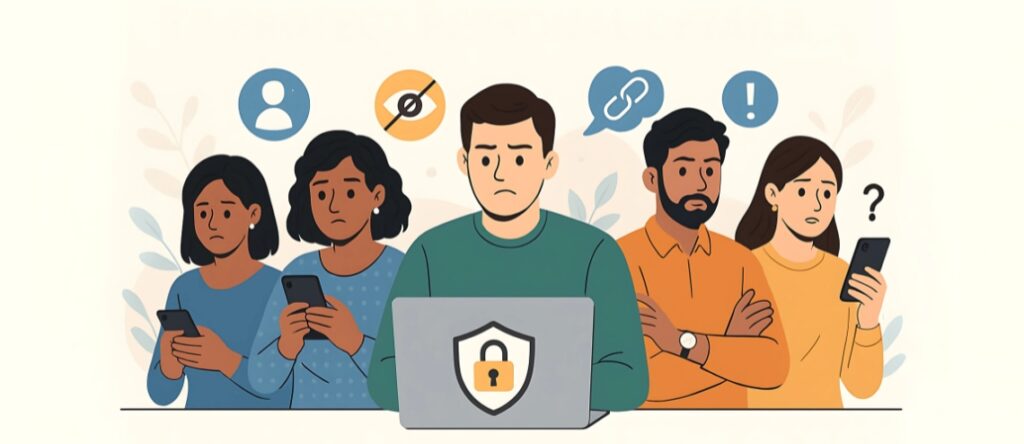
I ndia is a country of over a billion voices, and in this digital age, misinformation can spread faster than the truth. But the thing is, most people don’t want to spread lies, it's just that they simply don’t know any better.
With misinformation flooding every screen, every forward, and every feed, you play a crucial role too. Instead of becoming a carrier of false news. Be a filter. Be a fact-checker. Verify sources before sharing, even if they come from friends or family.
Here’s how to identify fake news, understand its forms, and stop it from spreading.
First, Know the Types
Let’s keep it simple:
- Misinformation: False info shared by mistake. Think: someone forwards an outdated health tip thinking it’s helpful.
- Disinformation: False info deliberately created to deceive or manipulate. Often used in scams to swindle your money.
- Malinformation: Twisted truth. Real info taken out of context to cause harm, like leaked private messages or edited videos.
Then, the Red Flags to Watch For
Before you believe or share anything, ask:
- Does it sound too shocking or like clickbait?
- Does it make you feel angry or afraid?
- Does it push an agenda?
- Is it full of spelling errors or looks badly designed?
- Are you unable to trace the source?
Check the Source Before You Trust
Fake websites and news portals often copy names and logos of trusted ones. But small things give them away:
- Domain names like govmt-india.com instead of gov.in
- No contact details or office address
- Missing “About Us” section
- Over-the-top claims without proof
Always question content that seems too sensational and provocative.
Common Tactics & Targets
- AI-generated content: Deepfakes, fake articles, and bots can spread disinformation rapidly.
- Targeted groups: Linguistic minorities, diaspora communities, and women (especially in political spaces) are disproportionately targeted.
- Conspiracy theories: Often emerge during uncertain times, appealing to emotional and psychological biases.
How to Talk to Someone Who Believes Misinformation
- Stay calm and respectful.
- Listen first, then respond with curiosity.
- Ask questions, avoid lecturing.
Understand psychological factors like:
- Confirmation bias (we believe what matches our views),
- Herd mentality (if many believe it, it seems true), and
- Need for belonging (ingroup beliefs can override facts).
How to Report Misinformation in India
See something false? Don’t ignore it. Report it
- WhatsApp: Long press the message → Tap “Report”
- Facebook/Instagram: Click the three dots on the post → “Report” → “False Information”
- Twitter/X: Tap the three dots → “Report Tweet” → Choose “Misleading or harmful”
- YouTube: Tap the three dots under the video → “Report” → “Misinformation”
For serious scams, frauds, or viral fake news, report it to:
- cybercrime.gov.in.
- Dial 1930 (National Cybercrime Helpline)



 Social Media Safety
Social Media Safety 







